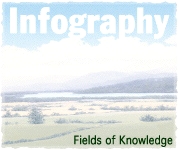
 | |
Geometric Reasoning Algorithms | |
The following sources are recommended by a professor whose research specialty is geometric reasoning algorithms. |
· T. C. Woo. Visibility maps and spherical algorithms. Computer-Aided Design, vol. 26(1), pp. 6-16, 1994.
· D. Dutta and T. C. Woo. Algorithm for multiple disassembly and parallel assemblies. ASME Journal of Engineering for Industry, vol. 117, pp. 102-109, 1995.
· R. H. Wilson, and J. C. Latombe. Geometric reasoning about mechanical assembly. Artificial Intelligence, vol. 71, pp. 371-396, 1994.
· R. R. Karinthi and D. S. Nau. An algebraic approach to feature interactions. IEEE Transactions on Pattern Analysis and Machine Intelligence, vol. 14, no. 4, pp. 469-484, April 1992.
· J. H. Vandenbrande and A. A. G. Requicha. Spatial reasoning for the automatic recognition of machinable features in solid models. IEEE Transactions on Pattern Analysis and Machine Intelligence, vol. 15, no. 12, pp. 1269-1285, December 1993.
· C. M. Hoffmann and J. R. Rossignac. A road map to solid modeling. IEEE Transactions on Visualization and Computer Graphics, vol. 2, no. 1, pp. 3-10, 1996.
· W. C. Regli, S. K. Gupta, and D. S. Nau. Extracting alternative machining features: An algorithmic approach. Research in Engineering Design, vol. 7, no. 3, pp. 173-192, 1995.
· S. K. Gupta and D. S. Nau. Systematic approach to analyzing the manufacturability of machined parts. Computer-Aided Design, vol. 27, no. 5, pp. 323-342, 1995.
· S. K. Gupta, D. Das, W. C. Regli, and D. S. Nau. Automated manufacturability analysis: A survey. Research in Engineering Design, vol. 9, no. 3, pp. 168-190, 1997.
· S. K. Gupta. Using manufacturing planning to generate manufacturability feedback. ASME Journal of Mechanical Design, vol. 119, pp. 73-79, March 1997.
· S. K. Gupta, D. A. Bourne, K. Kim, and S. S. Krishnan. Automated process planning for robotic sheet metal bending press-brakes. Journal of Manufacturing Systems, vol. 17, no. 5, pp. 338-360, 1998.
· S. Gottschalk, M. C. Lin, D. Manocha. OBB Tree: A hierarchical structure for rapid interference detection. Proceedings of ACM Siggraph '96, pp. 171-180, 1996.
· Brian Mirtich. V-Clip: Fast and robust polyhedral collision detection. ACM Transactions on Graphics, vol. 17, no. 3, pp. 177-208, July 1998.
· G. Gilbert, D. W. Johnson, S. S. Keerthi. A fast procedure for computing the distance between complex objects in three-dimensional space. IEEE Journal of Robotics and Automation, vol. 4, no. 2, April 1998.
· B. Chazelle, D. P. Dobkin. Intersection of convex objects in two and three dimensions. Journal of ACM, vol. 34, pp. 1-27, 1987.
· H. Samet. Spatial Data Structures: Quadtrees, Octrees and Other Hierarchical Methods. Addison-Wesley, 1989
· B. K.Choi, D. H. Kim and R. B. Jerard. C-space approach to tool-path generation for die and mould machining. Computer-Aided Design, vol. 29, no. 9, pp. 657-669, 1997.
· G. Elber and E. Cohen. Toolpath generation for freeform surface models. Computer-Aided Design, vol. 26, no. 6, pp. 490-496, June 1994.
· P. L. Baehmann, S. L. Wittchen, M. S. Shephard, K. R. Grice, and M. A. Yerry. Robust, geometrically based, automatic two-dimensional mesh generation. International Journal for Numerical Methods in Engineering, vol. 24, no.6, pp. 1043-1078, 1987.
· S. H. Lo. A new mesh generation scheme for arbitrary planar domains. International Journal for Numerical Methods in Engineering, vol. 21, pp. 1403-1426, 1985.
· H. Jin and N. E. Wiberg. Two-dimensional mesh generation, adaptive remeshing and refinement. International Journal for Numerical Methods in Engineering, vol. 29, pp. 1507-1526, 1990.
· J. R. Rossignac, Issues in feature-based editing and interrogation of solid models. Computers and Graphics, vol. 14, pp. 149-172, 1990.
· H. Suh and R. S. Ahluwalia. Feature modification in incremental feature generation. Computer Aided Design, vol. 27, no. 8, pp.627-635.
· J. Han and A. G. Requicha. Integration of feature based design and feature recognition. Computer-Aided Design, vol. 29, no. 5, pp. 393-403, May 1997.
· Douglas L. Waco and Yong Se Kim. Geometric reasoning for machining features using convex decomposition. Computer Aided Design, vol. 26, no. 26, pp. 477-489, June 1994.
· S. Joshi and T. C. Chang. Graph based heuristics for recognition of machine features from three dimensional solid model. Computer Aided Design,vol. 20, no. 2, pp. 59-66, 1988.
· T. H. Dani and R. Gadh. Creation of concept shape designs via a virtual reality interface. Computer Aided Design, vol. 29, no. 8, pp. 555-563, 1997.
· S. N. Trika, P. Banerjee and R. L. Kashyap. Virtual reality interfaces for feature-based design. Computer Aided Design, vol. 29, no. 8, pp. 565-574, 1997.
· S. Szykman, J. Cagan. A simulated annealing-based approach to three-dimensional component packing. Transactions of the ASME, vol. 117, p. 308, 1995.
· S. Szykman, J. Cagan. Constrained 3D component layout using simulated annealing. Transactions of the ASME, vol. 119, pg. 28, 1997.
"The Infography about Geometric Reasoning Algorithms"
http://www.infography.com/content/756425839735.html
© 2009 Fields of Knowledge
Essex, Iowa 51638-4608 USA